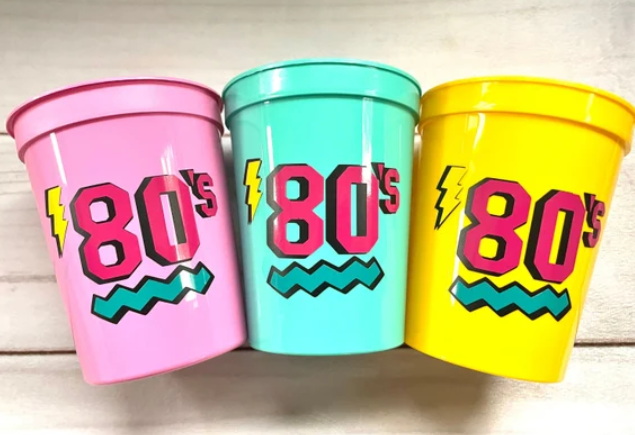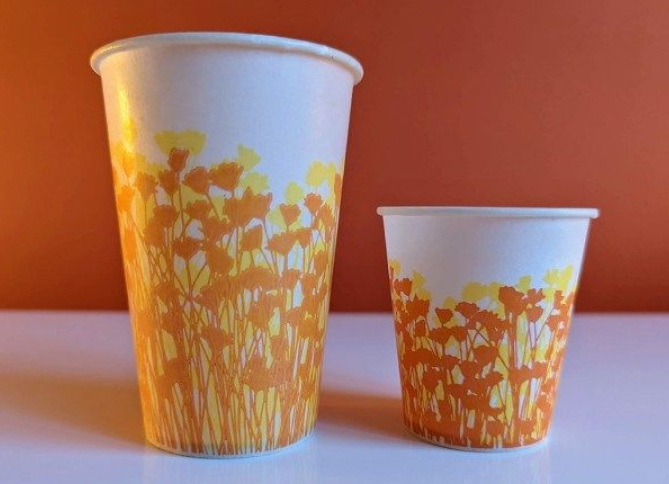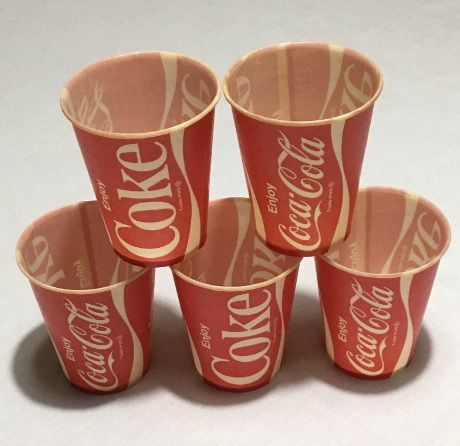
Content Menu
● Introduction to 80s Disposable Cups
>> Advancements in Printing Technology
>> Design Elements
● Pop Culture Influence on 80s Disposable Cups
● Impact on Consumer Culture
>> Branding and Marketing
● Legacy of 80s Disposable Cups
>> Nostalgia and Retro Revival
● The Jazz Cup Phenomenon
>> Cultural Significance
● Influence on Modern Design
>> Retro Revival in Fashion and Home Decor
● Conclusion
● FAQ
>> 1. What were some common designs on 80s disposable cups?
>> 2. How did advancements in printing technology impact 80s disposable cups?
>> 3. What role did branding play in the popularity of 80s disposable cups?
>> 4. How have 80s disposable cups influenced modern design?
>> 5. What is the cultural significance of the Jazz Cup design?
● Citations:
The 1980s was a vibrant decade marked by bold fashion, iconic music, and a surge in consumerism. Amidst this cultural explosion, 80s disposable cups played a significant role in shaping pop culture. These cups, often adorned with colorful graphics and patterns, became more than just a utility item; they were a canvas for artistic expression and a reflection of the era's aesthetic trends.

Introduction to 80s Disposable Cups
Disposable cups have been around since the early 20th century, but it was in the 1980s that they truly became a staple in daily life. The decade's emphasis on bold colors, geometric shapes, and whimsical designs made their way onto paper cups, transforming them into minor artworks that captured the exuberant spirit of the time.
Advancements in Printing Technology
Advancements in flexographic printing technology allowed for mass production of printed paper cups at a low cost. This enabled companies to print crisp, vibrant graphics in multiple colors with ease, opening the doors for eye-catching cup designs that aligned with 80s style. The decade's cultural excitement around bold graphics and patterns made printed paper cups even more popular. Consumers loved the lively, playful cup designs that embraced the era's aesthetic, making them a useful product that also allowed people to express their style[1].
Design Elements
Paper cups in the 1980s were defined by their bold, bright colors and funky designs. Popular colors included bright neons like hot pink, electric blue, lime green, and fluorescent yellow. These vivid shades stood out against the white paper material, creating eye-catching cups. Abstract shapes and geometric patterns were also prevalent in 80s cup graphics. Squares, circles, triangles, zig zags, and other motifs were arranged in colorful collages on the cups, reflecting the Memphis design movement's emphasis on postmodern shapes and colors[1].
Pop art-inspired imagery was common as well. Cups featured colorful renditions of food, flowers, animals, and other fun subjects. This lively pop art style matched the playful, casual vibe of the decade. The graphics were often simplified in cartoonish outlines and blocks of color, much like the work of Andy Warhol and Roy Lichtenstein[1].
Pop Culture Influence on 80s Disposable Cups
The imagery used on 80s disposable cups reflected the cultural trends and pop culture of the decade. Palm trees, sunsets, and tropical beaches conveyed a sense of fun and relaxation. These tropical elements were often combined with retro shapes like stars, lightning bolts, and squiggly lines to create a playful, kitschy aesthetic[1].
Pop culture icons also made frequent appearances. It was common to see characters from movies, TV shows, video games, and comic books depicted on paper cups. Pac-Man and Super Mario were popular video game figures. Looney Tunes characters like Bugs Bunny and Daffy Duck showed up, capitalizing on their popularity from Saturday morning cartoons. Action heroes like Rambo and the Terminator leveraged their blockbuster film fame. Pop singers like Madonna and Michael Jackson occasionally graced paper cups too[1].
Impact on Consumer Culture
The 1980s marked a boom time of consumerism, and brands leaned heavily into lifestyle marketing. 80s disposable cups became branding billboards, covered in logos, characters, and slogans. They served as portable extensions of the brand experience, making them a significant part of the cultural zeitgeist. Major food chains like McDonald's featured iconic characters and designs that became ingrained into the cultural zeitgeist[1].
Branding and Marketing
Major brands such as Solo, Sweetheart, and Dixie were prominent in the paper cup industry during the 1980s. Solo was known for its sturdy construction and association with fun events, while Sweetheart was an innovator in cup printing technology, setting trends with their fun, fashionable cups[1].
Legacy of 80s Disposable Cups
The paper cup designs of the 1980s have left a lasting legacy that continues to influence design and culture today. Much of this is driven by nostalgia for the vibrant, bold aesthetic that defined the era. In the 2010s, the vaporwave art movement emerged, which draws heavily on 1980s design for inspiration. Vaporwave art often features 3D shapes, neon colors, and Roman busts that mimic the kitschy consumerism of 80s aesthetic[1].
Nostalgia and Retro Revival
The nostalgia for 80s disposable cups is not just about the cups themselves but also about the memories they evoke. For many, these cups are a reminder of carefree summer days, outdoor gatherings, and the joy of simple pleasures. The bold designs and colors of these cups have become iconic symbols of the decade, triggering fond memories for those who grew up during this time[1].

The Jazz Cup Phenomenon
The Jazz Cup, introduced in the 1990s but influenced by 80s design trends, has become an iconic symbol in pop culture. Its distinctive aesthetics and nostalgic appeal have made it more than just a disposable cup; it has become a cultural icon.
Cultural Significance
The Jazz Cup design holds a significant place in the realm of pop culture and design. It burst onto the scene, captivating people with its vibrant teal and purple pattern embellished with distinctive squiggles and shapes. This design was inspired by the Memphis Design movement, which emerged in the 1980s and emphasized boldness, eclecticism, and a disregard for convention[3].
The Jazz Cup design was originally intended for disposable paper cups used at picnics and outdoor gatherings. However, its unique aesthetic soon caught the attention of a broader audience. People began to associate the design with carefree summer days, nostalgic memories, and a longing for simpler times. As a result, the Jazz Cup design started to transcend its original purpose and found a place in the world of pop culture[3].
Over the years, the Jazz Cup design has gained a cult following and become more than just a disposable cup. It has made its way onto a wide range of merchandise, from clothing and accessories to home decor and even tattoos. Its enduring popularity can be attributed to its unique blend of nostalgia, individuality, and expression[3].
Influence on Modern Design
The influence of 80s disposable cups can be seen in modern design trends. The bold aesthetic of the 1980s has inspired contemporary artists and designers. The vaporwave art movement, for example, draws heavily on 80s design elements, incorporating neon colors, geometric shapes, and retro-futuristic motifs into its visuals[1].
Retro Revival in Fashion and Home Decor
In recent years, there has been a resurgence of interest in retro designs, with many fashion brands and home decor companies incorporating elements reminiscent of 80s disposable cups into their products. This includes bold colors, abstract shapes, and playful patterns, all of which evoke a sense of nostalgia and fun[1].
Conclusion
80s disposable cups played a pivotal role in shaping pop culture by embracing the era's vibrant aesthetic trends and becoming a canvas for artistic expression. Their influence extends beyond the decade, with nostalgic appeal and retro revival art continuing to inspire modern design. As a testament to their impact, these cups have become collectible artifacts of the past, reminding us of the bold, playful spirit of the 1980s.

FAQ
1. What were some common designs on 80s disposable cups?
- Common designs included tropical motifs like palm trees and sunsets, combined with retro shapes and pop culture icons such as Pac-Man and Looney Tunes characters[1].
2. How did advancements in printing technology impact 80s disposable cups?
- Advancements in flexographic printing allowed for mass production of printed paper cups at a low cost, enabling companies to print vibrant graphics in multiple colors with ease[1].
3. What role did branding play in the popularity of 80s disposable cups?
- Brands used disposable cups as branding billboards, featuring logos, characters, and slogans to extend the brand experience and connect with consumers[1].
4. How have 80s disposable cups influenced modern design?
- The bold aesthetic of 80s disposable cups has influenced modern design trends, including the vaporwave art movement, which draws inspiration from 80s design elements[1].
5. What is the cultural significance of the Jazz Cup design?
- The Jazz Cup design has become a cultural icon, symbolizing collective nostalgia and a representation of a simpler past. It has transcended its original purpose as a disposable cup to become a symbol of pop culture[3].
Citations:
[1] https://pandopak.com/a-blast-from-the-past-look-at-80s-paper-cup-graphics/
[2] https://www.reddit.com/r/nostalgia/comments/kohuk0/wax_paper_coke_cups_a_staple_of_70s_and_80s_pizza/
[3] https://www.bridportmusic.co.uk/jazz-cup/
[4] https://jazzsologear.com/blogs/news/90s-nostalgia-why-the-jazz-solo-design-is-making-a-comeback
[5] https://www.huhtamaki.com/en/highlights/trends/a-short-history-of-the-paper-cup/
[6] https://en.wikipedia.org/wiki/Jazz_(design)
[7] https://gmz.ltd/paper-cup-designs-that-make-your-brand-pop/
[8] https://www.reddit.com/r/OutOfTheLoop/comments/3b2q3e/why_is_the_80s_solo_jazz_cup_design_so_popular/
[9] https://www.etsy.com/market/made_in_the_80s_cups
[10] https://www.pinterest.com/pin/832321574856361628/
[11] https://www.shutterstock.com/search/80s-nostalgia?image_type=vector
[12] https://www.pinterest.com/pin/341851427950136674/
[13] https://webflow.com/blog/90s-jazz-design
[14] https://vocal.media/feast/a-brief-history-of-the-disposable-coffee-cup
[15] https://www.mashedinplastic.co.uk/jazz-cup/
[16] https://www.smithsonianmag.com/smart-news/where-did-snazzy-jazz-design-paper-cups-come-180955779/
[17] https://www.retroist.com/p/orange-and-yellow-flowers-paper-cups
[18] https://www.reddit.com/r/IAmA/comments/394teo/ama_request_the_graphic_designer_who_made_the/
[19] https://lifeandthyme.com/drink/the-history-of-to-go-coffee-and-a-more-sustainable-future/

















